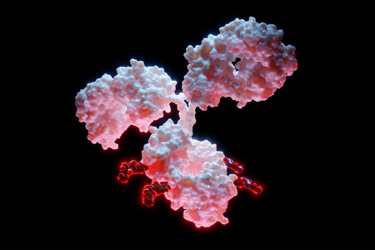ADC Executive Roundtable — Perfecting The Payload And Navigating The Regulatory Landscape
A conversation with Philipp Spycher, Daniel J. O'Connor, and Radek Špíšek

This is the first part of a series exploring antibody-drug conjugates, the science, and the potential they hold with three biopharma chief executive officers, Daniel J. O’Connor of Ambrx, Philipp Spycher of Araris Biotech AG, and Radek Špíšek of SOTIO Biotech.
Pfizer dropped jaws when it announced it agreed to pay $43 billion to acquire Seagen earlier this year.
At the heart of the deal, to close later this year or early 2024, is Seagen’s antibody-drug conjugate, or ADC, pipeline. Pfizer’s acquisition sits atop an explosion of activity around ADCs, with many companies building their own pipelines in an especially competitive domain.
Part of the excitement stems from the unknown potential ADCs have. Up until now, they have focused on cancer. But as our understanding of this modality grows, biotech leaders see applications to take on a broader range of illnesses.
One big area bubbling with new discoveries has to do with the relationship between payloads and antibodies — the drug-antibody ratio, or DAR. As we’ll learn here, DAR can be tweaked with a high level of control allowing developers to turn down the drug and raise dosage or vice-versa, depending on the target.
Our trio takes it from here.
Perfecting The Payload
Bioprocess Online: Are you particularly excited about any DAR developments at your company or elsewhere?
Spycher: Yes, utilizing our linker technology we have developed highly efficacious ADCs, even using a low DAR approach with a low-potency warhead. We are particularly excited about these developments since we believe that high dosing leads to high tumor penetration and saturation of as many receptors in the tumor as possible. This will be crucial to successfully treat solid tumor targets. Since we only have very few low-potency drugs attached, we believe that we can also avoid dose-limiting toxicities and effectively eradicate tumors.
O’Connor: One challenge to developing ADCs is achieving optimal DAR and conjugation site selection. The DAR is important for maintaining the balance between efficacy and safety. By optimizing the site-specific conjugation of the cytotoxic payload to the antibody with the appropriate linker, superior stability and homogeneity can be achieved, reducing dose-limiting off-site toxicities. At Ambrx, we accomplish this by using our expanded genetic code technology platform to incorporate synthetic amino acids into our ADCs to facilitate stable conjugation and optimize our linker-payload at any selected site in the antibody. This way, we address major limitations of traditional conjugation technologies with respect to both release rate and optimal DAR.
Špíšek: Yes, we have been keeping a close eye on DAR developments. After the clinical success of high-DAR Enhertu and Trodelvy in solid tumors, the field has begun to understand the differences between low- and high-potency payloads and the differing DAR requirements. A good example of this dynamic is demonstrated by SOT102, SOTIO’s claudin-18.2-targeting ADC with site-specific PNU conjugation in a DAR2 format, currently in Phase 1 dose-escalation studies. Compared to some other targets, claudin-18.2 appears to be a relatively clean target, largely restricted to tumor tissue and at lower levels also found in normal GI epithelia, allowing the use of an ultra-potent PNU payload.
However, we still selected the non-cleavable DAR2 format due to its potency and because of the payload’s mechanism of action. For targets that have potential off-tumor expression, payloads with lower potency and fast metabolism, such as topoisomerase 1 inhibitors, can be utilized in a high-DAR format. Therefore, understanding the target expression profile in cancer versus healthy human tissues is crucial when selecting the best-suited payload and DAR.
Bioprocess Online: How much toxicity is too much? If we accept that all ADCs will produce some level of undesired immune response, where do we draw the line?
Spycher: I think this question is best addressed when patients are involved in the conversation. By incorporating patients, we can better understand where the line should be drawn for them based on their experiences. The ultimate goal is to create ADCs that are highly efficacious with tolerable side effects that can be managed by a patient’s doctor, allowing them to have the best quality of life possible. We will always strive to create ADCs with the highest possible therapeutic indices while minimizing negative side effects.
Špíšek: Understanding the therapeutic window, meaning the dose range of an ADC that provides safe and effective therapy with minimal adverse effects, is how we define the accepted toxicity level. As this is largely driven by the payload and dependent on the target expression in normal tissues, we can consider whether to employ a payload with a bystander effect. In other words, we select one that permeates the membranes, diffuses back to the extracellular matrix, and excerpts cytotoxicity also to neighboring cells. This effect further enhances the efficacy of an ADC but can lead to additional toxicity. Regarding the immune response, the Fc part of the antibody can be engineered to reduce interactions with immune cells, as is done for the SOT102 molecule. However, the immune response can also be beneficial in indications where immunotherapies, such as immune checkpoint inhibitors (ICI), are used as part of standard of care, for example. Some of the ADC payloads are known to cause immunogenic cell death, which can synergize with ICI. In an ideal case, this can enable lower dosing of both treatments and hence increase the therapeutic window.
O’Connor: The goal in developing any treatment is to strike a balance where the therapeutic benefits outweigh the potential adverse effects, ensuring patient safety and maximizing the potential for successful treatment outcomes. Patients should not be forced to choose between effectiveness and safety.
When conducting our clinical trials we take into consideration multiple measurements, the most important being measures of overall clinical benefit. For example, in prostate cancer the levels of PSA are important indicators a drug is working, but duration and durability of progression-free survival (PFS) are more important measurements that a treatment will be tolerable.
Bioprocess Online: Tell us about your thoughts on ADCs for other indications like neurodegenerative or autoimmune diseases.
Spycher: Simplistically, as long as there is an antibody to efficiently target the molecule of interest and an effective payload that can be attached, the future of ADCs could be disease agnostic. It’s a great thought experiment to envision how ADCs could be used to break down amyloid or tau plaques and tangles to treat Alzheimer’s disease or be used to quell an overactive immune system in patients with lupus. As ADCs for cancer patients improve and further progress through the clinic, I think we will see them applied to other diseases.
Špíšek: There are certainly some interesting developments of ADCs outside of oncology. In neurodegenerative and cardiovascular diseases there are several clinically active programs with antibody-oligonucleotide conjugates (AOC) where the oligonucleotide is aimed at downregulating expression of pathogenic proteins. For autoimmune diseases, in particular rheumatoid arthritis and Crohn’s disease, there is an interesting Phase 2 trial ongoing with ABBV-154 where the payload is a steroid. Additionally, ADCs where the payload is an antibiotic (antibody-antibiotic conjugate, AAC) have been investigated for bacterial infections. Thus, there is a promise of expanding ADCs beyond cancer therapy.
O’Connor: ADCs have significant potential in non-cancer indications, such as conditions where precise delivery of a therapeutic agent to a specific region or cell type in the body is necessary. The expansion of ADCs to indications beyond cancer signifies the increasing acknowledgment of their adaptability and their ability to revolutionize targeted therapy in diverse disease areas. However, there are still significant challenges to address in these areas, such as identifying appropriate targets, selecting the right payloads, and better understanding disease biology. Overcoming these challenges is important to fully harness the potential of ADCs beyond oncology.
Navigating The Regulatory Landscape
I also asked our roundtable about the regulatory landscape. Špíšek at SOTIO and O’Connor at Ambrx had the most to say about how ADCs’ complexity makes meeting requirements even more complex, and how transparency with regulators helps to get out in front of issues.
Bioprocess Online: How would you rate the global harmonization among regulators? Describe the differences between agencies across borders.
Špíšek: There are always opportunities to improve the alignment of regulatory requirements at the global level. Regarding regulatory requirements specific to ADCs, the difficulty is related to the fact that ADCs are considered a combination product composed of a biological constituent part and a drug constituent part. Consequently, requirements and guidelines relevant to both biologicals and drugs are applicable to ADCs, which renders the development program more comprehensive and more complex. In addition, the potential toxicity of the payload as well as off-target effects need to be carefully considered. This added complexity means that ADC programs are potentially more prone to divergent regulatory opinions.
Having said this, the FDA guidance on clinical pharmacology considerations for ADCs is a very good basis to make sure regulatory requirements will be met at the global level.
Bioprocess Online: What’s your advice to peers in the ADC space about interacting with regulators?
O’Connor: Collaboration between companies and regulatory agencies is essential. Open and transparent communication, early engagement with regulatory authorities, and proactive discussions about study designs, endpoints, and data requirements can help address potential issues and streamline the regulatory process.
Špíšek: ADCs combine the selectivity of an antibody for a specific target with the potency of a small molecule drug. It is therefore crucial to fully understand the mechanism of action as well as the pharmacokinetic/pharmacodynamic profile of the ADC to meet the regulatory requirements. Given the complexity of the molecule, it is even more important to meet with regulatory authorities on a regular basis to discuss the manufacturing process as well as the sponsor’s clinical development plan, in particular with respect to the dose selection strategy to bring the product to patients as quickly as possible.
About the Experts:
 Daniel O’Connor has over 23 years of executive experience and leadership in all aspects of the biopharmaceutical industry, including CEO leadership of two public oncology-focused companies, OncoSec Medical and Advaxis Inc., and other executive leadership roles at ImClone Systems, Bracco Diagnostics, and the former PharmaNet Inc., now Syneos Health. He has led numerous life sciences licensing transactions and drug development collaborations with major pharmaceutical companies and has raised hundreds of millions in the capital marketplace. He earned a J.D. from the Dickinson School of Law of Pennsylvania State University and a B.A. from Boston University.
Daniel O’Connor has over 23 years of executive experience and leadership in all aspects of the biopharmaceutical industry, including CEO leadership of two public oncology-focused companies, OncoSec Medical and Advaxis Inc., and other executive leadership roles at ImClone Systems, Bracco Diagnostics, and the former PharmaNet Inc., now Syneos Health. He has led numerous life sciences licensing transactions and drug development collaborations with major pharmaceutical companies and has raised hundreds of millions in the capital marketplace. He earned a J.D. from the Dickinson School of Law of Pennsylvania State University and a B.A. from Boston University.
 Radek Špíšek graduated from the First Faculty of Medicine of Charles University in Prague and received his Ph.D. in immunology. Between 2000 and 2002, he worked at Institute de Biologie of Université de Nantes in France. He spent 2005 to 2007 on the team led by Professor Ralph Steinman, a medicine and physiology Nobel laureate, at the Laboratory of Cellular Physiology and Immunology/Center for Immunology and Immune Diseases, Rockefeller University, New York. He focuses on tumor immunology and tumor immunotherapy. He is a professor at Charles University’s Second Faculty of Medicine. He has received postgraduate clinical certification in pediatrics and in allergology and clinical immunology. He joined SOTIO in 2010 where he has been a member of the company’s management and has overseen research and manufacturing. He was appointed CEO in March 2018.
Radek Špíšek graduated from the First Faculty of Medicine of Charles University in Prague and received his Ph.D. in immunology. Between 2000 and 2002, he worked at Institute de Biologie of Université de Nantes in France. He spent 2005 to 2007 on the team led by Professor Ralph Steinman, a medicine and physiology Nobel laureate, at the Laboratory of Cellular Physiology and Immunology/Center for Immunology and Immune Diseases, Rockefeller University, New York. He focuses on tumor immunology and tumor immunotherapy. He is a professor at Charles University’s Second Faculty of Medicine. He has received postgraduate clinical certification in pediatrics and in allergology and clinical immunology. He joined SOTIO in 2010 where he has been a member of the company’s management and has overseen research and manufacturing. He was appointed CEO in March 2018.
 Philipp Spycher has an extensive background in bioconjugation and ADCs. He obtained his master’s degree and Ph.D. from ETH Zurich in material science and protein engineering. During his post-doctoral work at Paul Scherrer Institute, he introduced the novel approach of using transglutaminases for antibody conjugation, which led to the discovery of what is now called Araris linker technology.
Philipp Spycher has an extensive background in bioconjugation and ADCs. He obtained his master’s degree and Ph.D. from ETH Zurich in material science and protein engineering. During his post-doctoral work at Paul Scherrer Institute, he introduced the novel approach of using transglutaminases for antibody conjugation, which led to the discovery of what is now called Araris linker technology.
